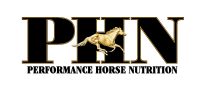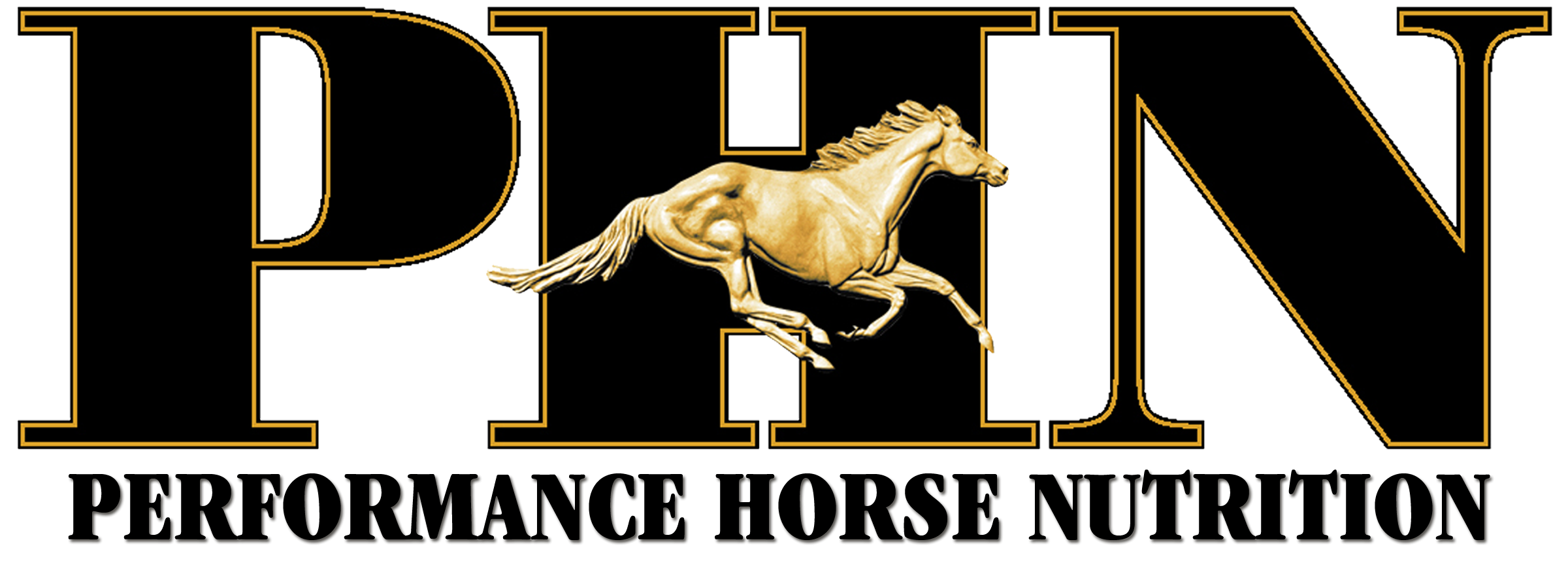WHAT CAN YOU LEARN FROM a
FEED TAG
2021

Written by Performance Horse Nutrition
Commercially prepared, bagged, horse feed requires a feed tag. It’s the law, no exceptions. The purpose of feed tags is to protect customers and honest merchants from deception and confusion. Initially, feed tags were created to standardize weights and measures listed on feeds. Imagine the confusion if every bag of feed listed the amount contained in that bag in different units. Some would list bushels, others would list pounds and still others may list grams. Current feed tags go further in that they assure the feed meets certain standards such as guarantees of nutrient content. These guarantees provide the customer with a basis in which they can begin to compare feed products.
Feed tag “rules” and “regulations” are written and enforced by the Association of American Feed Control Officials (AAFCO). Each individual state has their own regulatory personnel who are members of AAFCO. These state regulatory people are charged with the task of inspecting feed tags, testing feeds, and interpreting and enforcing feed tag rules and regulations. Since each state has their own offices and people, rules and regulations are occasionally interpreted differently in different states. In other words, a feed tag that is perfectly acceptable in Vermont may not be acceptable in California. Every commercial horse feed tag is required to contain certain information. Feed tags are to include the brand name, product name, purpose statement, guaranteed analysis, list of ingredients, directions for use, caution statements or warnings, name and address of manufacturer, and a quantity statement. All of this information is important to help the customer select a feed product that is appropriate for their individual animal.
Beginning at the top of the feed tag, the brand name and/or the product name is listed. Ideally, the product name should reflect the intended use of the product. For example, a product that includes the word “Development” is assumed to be a feed for young, growing horses or pregnant mares.
Since product names can be deceiving, AAFCO may also require a purpose statement to be included under the product name. A purpose statement identifies the specific group of horses for which the product is intended. A purpose statement may read: For maintenance of mature horses. This product would be intended for mature horses that are not pregnant, lactating or being worked. Another example may read: For horses in training or work. This product would be intended for horses that are being actively ridden or worked. The take home message regarding the purpose statement on a feed is to match what your horse is doing to the purpose statement. In other words, don’t feed a feed designed for a mature horse to a young, growing horse.
The next item on a feed tag is the guaranteed analysis. The list of nutrients which are guaranteed is specific to different species of animals. In other words, the nutrients guaranteed on a feed intended for poultry is different than for a feed intended for horses. A commercial horse feed tag guarantees the following information: minimum crude protein, minimum crude fat, maximum crude fiber, minimum and maximum calcium, minimum phosphorus, minimum copper, minimum zinc, minimum selenium, and minimum vitamin A. Since these nutrients are guaranteed on a horse feed tag, the state feed regulatory office will actually sample and analyze the feed for these nutrients. If the feed does not contain the proper amount of nutrients, the regulatory people can issue fines and even stop the sale of the feed.
Some people wonder why more nutrients are not guaranteed on the feed tag. The simple answer is that if we listed more guarantees, the state regulatory people would have to analyze for more nutrients, and they are not staffed and willing to take on this task. Another common question concerns the mathematical units used to express the guarantees. Again AAFCO designates the units, and the feed manufacturer cannot deviate from the standards imposed in the rules. Therefore, everyone will need to get used to ppm (parts per million) as a nutrient concentration.
Following the guaranteed analysis is the list of ingredients. Normally, these ingredients are listed in descending order from the ingredient in highest concentration to the ingredient in lowest concentration. Not all feed companies strictly adhere to this guideline. Some companies will rearrange or group ingredients on a feed tag with only limited regard to the amount of ingredient in the feed. The other issue with listing the ingredients contained in a feed is the terms used to describe the ingredients. In general, two different sets of terminology exist: individual terms and collective terms.
Individual terms list ingredients according to their common name. For example, corn is called corn and barley is called barley. Collective terms allows the manufacturer to utilize terms such as “grain products” which may include corn, barley, oats, or several other ingredients. They can also use terms such as “processed grain by-products” which may include a host of ingredients from wheat mill run to peanut skins. The problem with collective terms is that you do not know exactly which ingredient is being used or the amount of ingredient in the formula. Other collective terms often utilized include forage products, plant protein products, roughage products, and molasses products. The reason collective terminology is utilized is that it allows manufacturers the ability to eliminate ingredients or switch ratios of ingredients without constantly changing the feed tag.
Unfortunately, many states do not allow manufacturers to select the terminology they would like to utilize. Therefore, if a state requires collective terms this will make it difficult for feed customers to compare feed tags.
Following the list of ingredients are feeding instructions for the feed. Some states will allow feeding instructions to be printed on the feed bag rather than on the feed tag. The feeding instructions typically restate the type of horse for which the feed is intended along with a daily feed intake range that will properly fortify the horse with essential nutrients.
The feeding instructions will also include guidelines for providing forage (hay or pasture) along with clean, fresh water and salt. The take home message for feeding instructions is that they provide guidelines for using the product. If the customer chooses to feed ½ of the minimum recommended level, they cannot possibly hope their horse will receive adequate nutrition from the bagged feed. If your horse does not require the amount of feed indicated on the feeding instructions, simply ask the manufacturer if they have a more concentrated product that can be fed at the level of intake which makes you comfortable.
Many feed tags will also contain caution statements and warnings. These warnings will vary from “do not feed moldy or insect infested feed”, to “do not feed additional sources of selenium with this product”. These statements are intended to protect the customer and ultimately their horse from sickness. Of course it is impossible to list all potential caution statements, so common sense should always prevail.
If you ever have a question or concern, contact the feed manufacturer.
The final piece of information on the feed tag is the name and address of the feed manufacturer along with the quantity statement. The name and address of the manufacturer provides information for the customer should they have a question on the product. It also provides the state regulatory agencies with contact information if they should have a problem with the product. The quantity statement indicates the weight of the amount of feed in the bag. To date, horse feed bags typically hold 50 lbs of product.
With this brief overview of horse feed tags, what can we learn from a feed tag? We can certainly learn the intended purpose of the feed and determine if this feed is correct for our horse. We can learn something about the nutrient guarantee of the product. Learning about the ingredients utilized in the feed may be difficult if the manufacturer is using “collective” instead of “individual” terms. From the feeding instructions, we can learn if we have chosen a product which fits the feed requirements of our horse. If we must feed more or less feed than recommended, we need to discuss this with the manufacturer and possibly choose a different product. From the caution statement, we can learn if other supplements or feeds are necessary with this feed product. We can also learn feeding practices that may reduce the chance of sickness associated with a feed. Finally, we can learn the net weight of the product in the bag and the name and address of the feed manufacturer. Can we compare two tags and learn which feed is best? The answer is likely no, since we only have limited information available to us on the feed tag.

